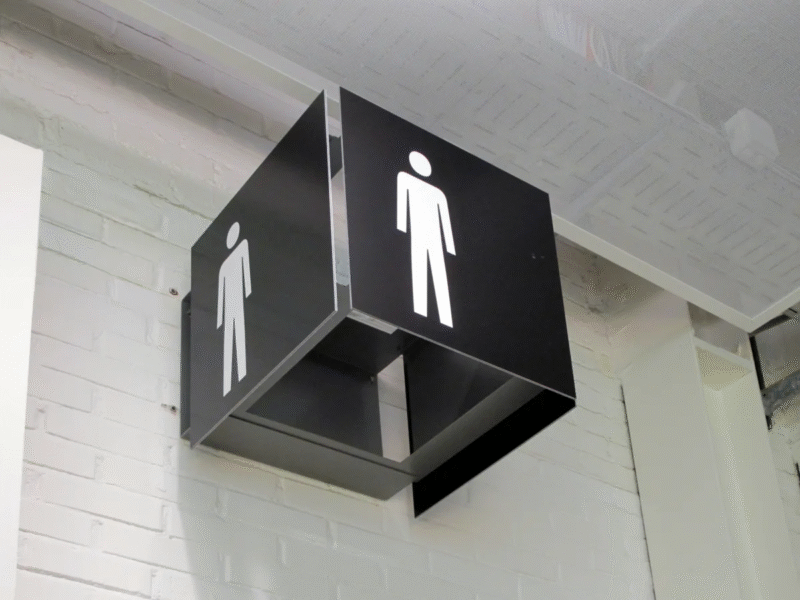You walk into a large building, maybe a hospital, a university, or a government office, and suddenly, everything feels unfamiliar. Signs are around, sure, but they don’t seem to help. You’re turning in circles, unsure where to go next.
That moment of confusion? It’s exactly what thoughtful design is meant to prevent. This is where wayfinding and signage come into focus. While many think both are the same, as they both serve a purpose, they are different.
Let’s explore how they differ and why it matters more than you might think.
What Is Signage?
Signage is straightforward. It’s the physical sign you see — a room number on a door, a restroom symbol, or an exit sign above a hallway. These signs give basic information. They tell you what something is or where it’s located.
Signs can be directional (like arrows), informational (like office hours), regulatory (like “No Smoking”), or identification-based (like “Conference Room A”).
But signs alone aren’t always enough. That’s where wayfinding steps in.
What Is Wayfinding?
Wayfinding system helps people move from one place to another. It’s not just about signs. It’s about creating a clear path. That includes placement, flow, layout, symbols, typography, and even color schemes.

Imagine signage is a single puzzle piece. Wayfinding is the whole puzzle.
Professionals like SPM Design environmental wayfinding design teams focus on more than just printing signs. They study human behavior, space layout, and user experience to create systems that feel intuitive.
For example, a hospital might have signs pointing to various departments. But if the signs are placed too high or use confusing wording, people still get lost. A proper wayfinding plan considers the lighting, the walking route, decision points, and how visitors feel while navigating.
How Do They Work Together?
Despite their differences, wayfinding and signage are interdependent. Good wayfinding uses signage as one of its tools. But without thoughtful planning, signs can easily become cluttered or go unnoticed.
Wayfinding gives direction a bigger meaning. It tells a story through the space, such as how someone enters, what they see first, where their eyes go, and how they move forward.
Why the Difference Matters?
If you’re designing a large building like a campus, airport, office complex, or museum, knowing the difference between signage and wayfinding can change the experience for everyone who walks in.
Poor signage alone leads to frustration. Good wayfinding, on the other hand, makes people feel comfortable. They don’t feel anxious. Instead, they move naturally, knowing where to go without much thought.
That’s exactly what SPM Design environmental wayfinding design focuses on, making spaces easier to understand and more enjoyable to move through.
Final Thoughts
To sum it up: signage tells you where you are, but wayfinding helps you get where you’re going. When used together, they improve the experience of every visitor, employee, or customer who interacts with your space.
If you’re planning a space that people will visit often, investing in professional wayfinding, not just signage, is one of the best choices you can make.





More Stories
How Rental Storage Containers Can Help During Moving And Relocation?
Why Is It Important to Get Vapor Intrusion Mitigation Services?
What To Expect In A California Crane Operator Training Program?